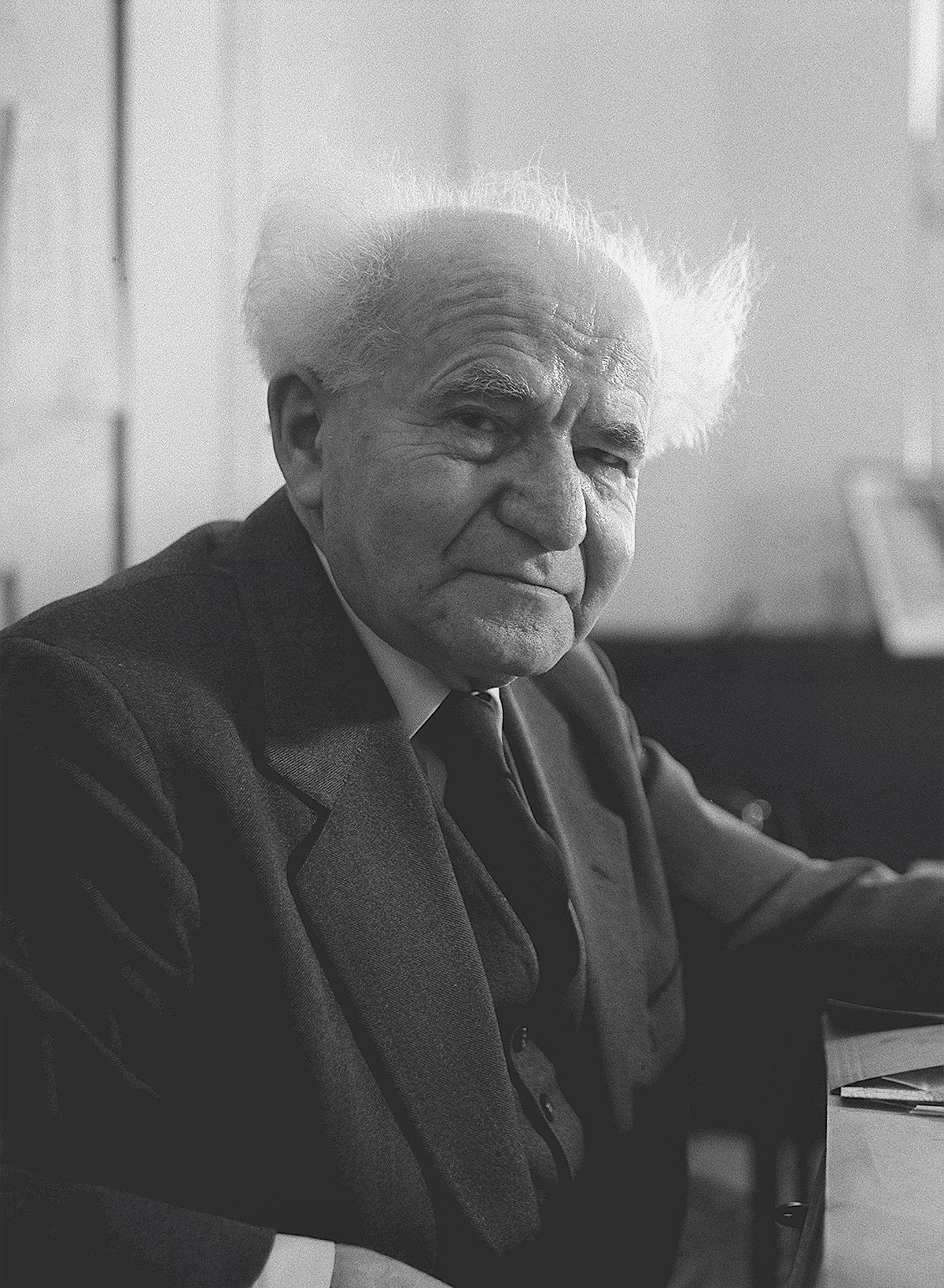
Ben-Gurion in 1960
Prof. Sam Lehman-Wilzig – Reaching the Height(s) to Become Prime Minister
Israelis today prefer Benjamin (“Benny”) Gantz to Binyamin (“Bibi”) Netanyahu as the next prime minister – so show all the latest polls over the past few weeks. Although they share the same first name, there is one physical element that could be of great significance: their respective height. Gantz is 1.91m (6’3”) whereas Bibi is 1.84m (6’0”). Why might that be important?
Social science research clearly shows that because of evolutionary pressures, people “naturally” perceive height as indicating “power”. Indeed, their studies show taller presidents to be rated even by experts as having more leadership and communication skills, everything else being equal.
A research article in the academic journal Leadership Quarterly explains: “The advantage of taller candidates is potentially explained by perceptions associated with height: taller presidents are rated by experts as ‘greater’, and having more leadership and communication skills…. We conclude that height is an important characteristic in choosing and evaluating political leaders.” (https://www.sciencedirect.com/science/article/abs/pii/S1048984312000884)
Thus, one shouldn’t be surprised if it turns out that the common voter sees things the same way. Studies on presidential candidates’ height in the U.S. show that indeed this holds true, certainly these days. In the 22 presidential campaigns between 1796-1896 (where at least two candidates competed; occasionally there was only one candidate), the taller candidate won only 8 times, the shorter candidate won 13 times, and in 1 case their height was identical. However, in the 31 presidential races between 1900-2020, the picture flipped: in 22 the taller candidate won, and in only 9 did they lose (and one of those was a woman [Hillary Clinton], her sex probably more important than her height). (https://en.wikipedia.org/wiki/Heights_of_presidents_and_presidential_candidates_of_the_United_States).
What accounts for this significant change (well above statistical randomness)? Starting around the beginning of the 20th century, the newspapers started showing photos of the candidates – and then in the 1950s television entered the picture (pun intended). Thus, whereas most of the public had little idea of the candidates’ height before 1900 (other than those few who came out for the candidates’ train whistlestop, open-air gatherings), after the turn of the previous century they could clearly measure and compare them.
Is this phenomenon relevant to Israel? Perhaps, with the major caveat that Israel’s system (except between 1996-2003) does not have candidates for PM competing mano-a-mano. Rather, the vote is for a political party list, with the PM eventually (usually, but not always) being the leader of the party with the most MKs. However, there are two other aspects that seem to mimic the American case.
First, during Israel’s initial decades, the country had several quite short prime ministers: Ben-Gurion, Golda Meir, and Yitzchak Shamir (Rabin was not tall either: 1.74m/5’8”), but with the advent of commercial TV in the 1990s, the picture began to balance out: Bibi at over six feet, and Olmert at 1.87m/6’2” alongside the shorter PMs Ariel Sharon (1.70m/5’6”) and Ehud Barak (no data found but quite short).
Second, the “Americanization” of Israel in general, and Israeli “mediatization” specifically, suggests that we might be seeing a trend here. The term “mediatization” essentially means that most everything in society and politics is filtered through the media – and that politicians and social leaders behave in ways that will increase their media visibility and influence. Possibly the best example of this has been Netanyahu’s incessant attempts to influence the media – either by having “friends” buy media properties (e.g., Channel 14), or as he is accused of doing (the “2000” and “4000” Files), bribing media owners outright.
And yet. Since retiring several years ago from the IDF as its Chief of Staff, Benny Gantz has run a few election campaigns with only middling success. His height didn’t seem to be a significant factor, if at all. What, then, explains his recent sudden emergence as the leading candidate for prime minister? Clearly, PM Netayahu’s very poor performance in the past few months regarding the Judicial Reform program and its potentially devastating effect on Israel’s economy. Gantz is the anti-Bibi in personality and rhetoric: Bibi is charismatic; Benny is Mr. Normal; Bibi is slippery and divisive; Benny is a straight-shooter and middle-of-the-road. With the country in an uproar now for several months, many Center and moderate Right-wingers are seeking some modicum of peace and quiet on the home front – the reason that Gantz has drawn support away equally from Center-Left Lapid and Right-wing Netanyahu.
If this is true, then at least from the perspective of how Israelis decide on their supreme leader, the news is positive. They have not (yet) moved towards voting based on superficial, American-style physical traits as determinative of who is the best fit to lead, but rather as a result of what the politician does and stands for. So far, so good: the height of the matter is that in today’s Israel, a candidate’s height doesn’t seem to matter much.







